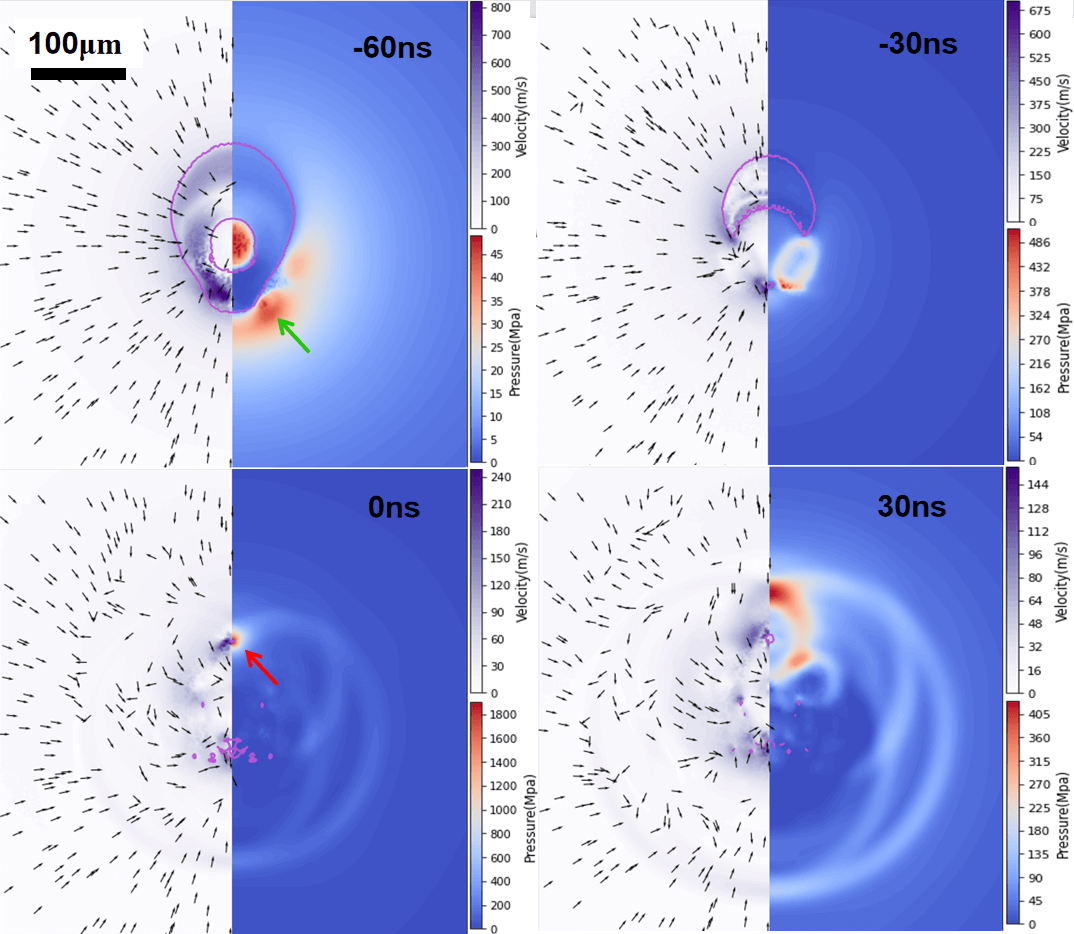 Open Access
Open Access
PROCEEDINGS
On the Shock-Wave Self-Focusing Dynamics of a Single Collapsing Bubble: A Numerical Study
1 Nanhai Institute of Harbin Engineering University, Sanya, 572024, China
2 College of Shipbuilding Engineering, Harbin Engineering University, Harbin, 150001, China
* Corresponding Author: Qingyun Zeng. Email:
The International Conference on Computational & Experimental Engineering and Sciences 2024, 30(2), 1-2. https://doi.org/10.32604/icces.2024.012089
Abstract
The collapses of bubbles near rigid walls are seen widely in engineering and medical applications, examples are surface cleaning, sonoporation, under water explosion, and cavitation erosions, to name a few. Recent experimental studies demonstrated that only bubbles with extremely small stand-off distance γ (γ = d/Rmax, γ is stand-off distance, d is the initial distance of the bubble center to the boundary, and Rmax is the maximum radius the bubble would attain) generate severe erosions during the first oscillating circle. This erosion phenomenon, attributed to a self-focusing mechanism, lacks a comprehensive explanation. Here we provided a detailed study on this phenomenon for the first time by using 3D numerical simulation based on OpenFOAM. The numerical results show that the non-spherical shape of the initial bubble leads to an asymmetrical toroidal bubble, which undergoes splitting at the edge exhibiting the highest curvature. Subsequently, the toroidal bubble experiences collapse and concentration towards the edge with the smallest curvature due to inertia, leading to an asymmetrical collapse. During this brief yet intense period (approximately 100ns), multiple shockwaves with amplitude of the order 100Mpa are emitted. These shockwaves interact with each other and the collapsing bubble, culminating in a self-focusing process that generates pressures exceeding 1000 Mpa. For γ > 0.2 , the toroidal bubble starts to recover an axisymmetric shape, i.e., the curvatures of interface become similar around the bubble, splitting at one side of the bubble is less likely to occur therefore the self-focusing process is suppressed. Other parameters affecting this process includes the textured surface and fluid viscosity, which will be studied in our future work.
Fig. 1. Bubble dynamics and shockwaves self-focusing of the asymmetrical toroidal bubble collapse ( γ = 0.12, Rmax = 628 μm, top view). Bubble collapse at time t = 0 ns, which is 121.9 μs after seeding the initial bubble. The right side of each figure is the pressure field, and the left side is the velocity field, respectively. The significant pressure buildup induces high velocities at the edges of the bubble with pronounced curvature (as indicated by the green arrow). These shockwaves converge towards the farthest point of the bubble (as denoted by the red arrow), where the cumulative pressure impact exceeds 1800 Mpa.
Keywords
Cite This Article
 Copyright © 2024 The Author(s). Published by Tech Science Press.
Copyright © 2024 The Author(s). Published by Tech Science Press.This work is licensed under a Creative Commons Attribution 4.0 International License , which permits unrestricted use, distribution, and reproduction in any medium, provided the original work is properly cited.


 Submit a Paper
Submit a Paper Propose a Special lssue
Propose a Special lssue Download PDF
Download PDF Downloads
Downloads
 Citation Tools
Citation Tools
